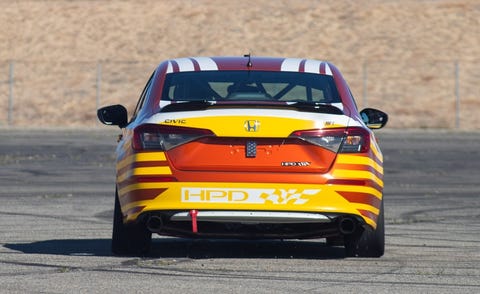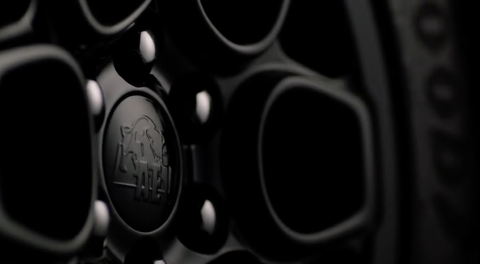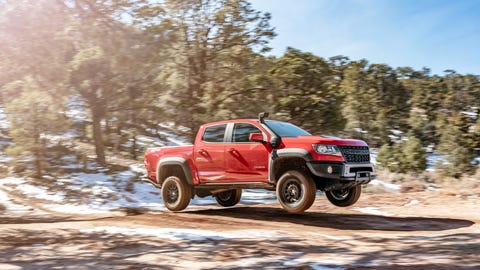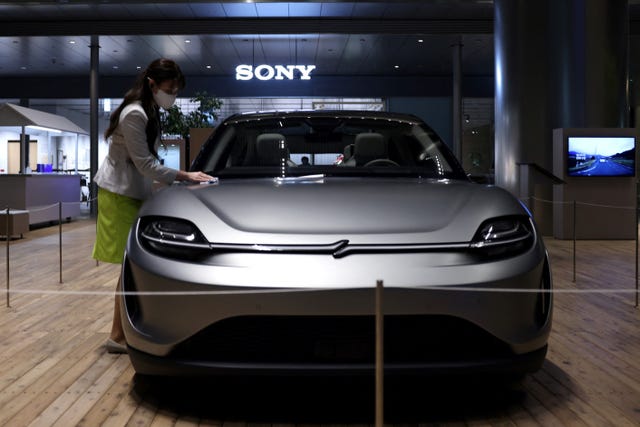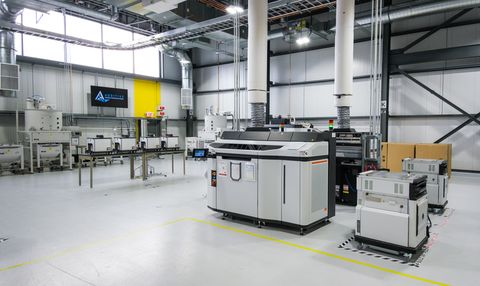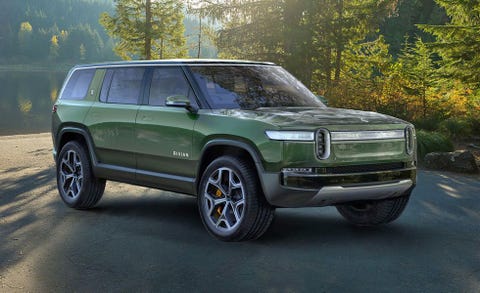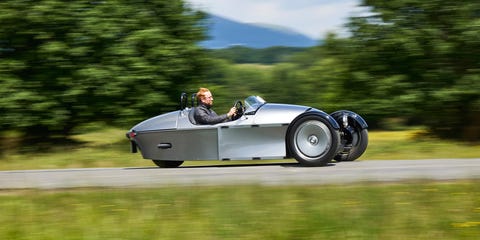2023 Subaru Crosstrek Review, Pricing, and Specs
Overview
It looks trail-ready with its rugged styling and meaty tires, but don’t be fooled by the 2023 Subaru Crosstrek’s appearance: it’s a car playing the part of an SUV. It won’t be going toe-to-toe with Jeep Wranglers or Ford Broncos at the off-road park, but the upside is that it’s more comfortable and carlike on the road than those dedicated dirt diggers. The Crosstrek is based on the Impreza hatchback and, like all other Subarus save the BRZ sports car, it comes with standard all-wheel drive. Its lifted suspension does offer enough ground clearance to tackle rutted dirt roads and grassy knolls, so there’s that. Unfortunately, the base 2.0-liter four-cylinder engine is breathless, especially when mated to the optional continuously variable automatic transmission (CVT); a six-speed manual is standard. The better choice is the optional 2.5-liter four-cylinder, which wakes up the Crosstrek with perkier acceleration. For the eco-friendly, there’s also an available plug-in hybrid.
What’s New for 2023?
A Special Edition model joins the Crosstrek family for 2023. It’s based on the Premium trim and comes exclusively with Desert Khaki (a.k.a tan) paint, 17-inch wheels, and dark gray exterior trim. The interior sports two-tone black-and-red upholstery.
Pricing and Which One to Buy
Base
$24,870
Premium
$26,220
Special Edition
$27,970
$29,220
Limited
$30,720
Hybrid
$38,070
The Sport model’s enhanced features—unique 17-inch wheels, yellow-stitched upholstery, faux-carbon-fiber trim, and advanced driving modes—are nice, but the more powerful 182-hp 2.5-liter engine is what makes it worthy of the upcharge. Like other Subaru sedans and SUVs, all-wheel drive is standard on the Crosstrek—a rarity in the small SUV marketplace, where it’s usually optional and sometimes not offered at all.
Engine, Transmission, and Performance
The Crosstrek’s base 152-hp four-cylinder engine makes a lot of noise but doesn’t offer a lot of motivation. As with many of its competitors, getting up to highway speed is a painfully slow process no matter whether you choose the standard manual transmission or the optional automatic. In our testing a 2.0-liter automatic model required a leisurely 9.2 seconds to reach 60 mph. The plug-in-hybrid model proved to be quicker, shaving 0.9 second off the 2.0-liter’s 60-mph time. This lack of energy is partially addressed by the optional 182-hp 2.5-liter engine that’s also found on the Legacy sedan and Outback station wagon. It hauls the Crosstrek to 60 mph in 7.5 seconds, which is still far from speedy, but far less stressful when you’re attempting a pass on a two-lane road or merging on to an Interstate. The Crosstrek’s handling, however, is pleasantly car-like thanks to well-weighted steering and a composed ride. The suspension is firm but not harsh, and it soaks up larger bumps without drama. As for the plug-in hybrid model, know that charging it fully will take up to five hours if connected to a standard household 120-volt outlet; using a 240-volt outlet does the job in as little as two hours. With only 17 miles of electric-only range, buyers should expect to spend plenty of time in gas mode.
Fuel Economy and Real-World MPG
The Crosstrek is among the most fuel efficient subcompact crossovers, with not only great EPA fuel-economy ratings but also some of the best results in our real-world testing. The Crosstrek’s 2.0-liter engine and continuously variable automatic transmission (CVT) may be lethargic, but they’re easy on fuel, with an EPA rating 28 mpg city and 33 mpg highway. The manual-transmission comes with sizable drops to 22 and 29 mpg, respectively. The 2.5-liter engine-and- CVT are rated at 27 mpg city and 34 highway. On our 75-mph fuel-economy route, which is part of our extensive testing regimen, the automatic-equipped 2.0-liter delivered an impressive 32 mpg; the manual also impressed with a 31-mpg result. The hybrid model is rated at up to 90 MPGe combined and 35 mpg on the highway, but we managed only 30 mpg in our testing. For more information about the Crosstrek’s fuel economy, visit the EPA’s website.
Interior, Comfort, and Cargo
In typical Subaru fashion, the Crosstrek has a basic and durable-feeling interior that prioritizes function over form. Its lack of flair is perfectly acceptable in the cheaper versions but starts to feel a bit drab in the Limited model, which can surpass $30,000 with options. Feeble attempts to spice things up include bits of faux-carbon-fiber trim and orange stitching on the seats, but the overall atmosphere remains dark and dull—though opting for the lighter gray cloth or leather upholstery helps somewhat. Flipping the Crosstrek’s 60/40 split-folding rear seat down expands the cargo hold considerably, but the folded seats don’t make for an entirely flat cargo floor. The Nissan Rogue Sport held more stuff in our testing despite its smaller exterior dimensions. The Crosstrek managed to hold 19 of our carry-on suitcases with the rear seats folded while the Rogue Sport held 20. The hybrid model’s cargo floor is higher than the nonhybrid to accommodate the battery pack, so we were only able to fit 17 carry-ons with the seats folded.
Infotainment and Connectivity
Subaru’s StarLink infotainment system is clearly organized, offers plenty of connectivity features as standard, and is easy to navigate in everyday use. A 6.5-inch touchscreen is standard equipment and offers Apple CarPlay and Android Auto smartphone integration, along with the expected Bluetooth support and a USB port. The Limited and hybrid models come with a larger 8.0-inch touchscreen that offers SiriusXM satellite radio plus some additional support apps; navigation is optional but only with the 8.0-inch display.
Safety and Driver-Assistance Features
The Crosstrek offers a host of driver-assistance features but they’re only standard on models with the CVT. Buyers of the six-speed manual transmission are locked out of this equipment. For more information about the Crosstrek’s crash-test results, visit the National Highway Traffic Safety Administration (NHTSA) and Insurance Institute for Highway Safety (IIHS) websites. Key safety features include:
- Available automated emergency braking
- Available lane-keeping assist
- Available adaptive cruise control
Warranty and Maintenance Coverage
Subaru’s warranty coverage is exactly in line with that of most of its competitors. As with many rival hybrids, the plug-in Crosstrek comes with an extra policy to cover that car’s expensive battery-electric components.
- Limited warranty covers three years or 36,000 miles
- Powertrain warranty covers five years or 60,000 miles
- Hybrid-component warranty covers eight years or 100,000 miles
- No complimentary scheduled maintenance
Specifications
Specifications
2021 Subaru Crosstrek 2.5
VEHICLE TYPE
front-engine, all-wheel-drive, 5-passenger, 4-door wagon
PRICE AS TESTED
$31,440 (base price: $27,545)
ENGINE TYPE
DOHC 16-valve flat-4, aluminum block and heads, direct fuel injection
Displacement
152 in3, 2498 cm3
Power
182 hp @ 5800 rpm
Torque
176 lb-ft @ 4400 rpm
TRANSMISSION
continuously variable automatic
CHASSIS
Suspension (F/R): struts/multilink
Brakes (F/R): 11.6-in vented disc/10.8-in disc
Tires: Falken Ziex ZE001 A/S, 225/55R-18 98H M+S
DIMENSIONS
Wheelbase: 104.9 in
Length: 176.5 in
Width: 71.0 in
Height: 63.6 in
Passenger volume: 97 ft3
Cargo volume: 21 ft3
Curb weight: 3351 lb
C/D
TEST RESULTS
60 mph: 7.5 sec
100 mph: 22.2 sec
Rolling start, 5–60 mph: 8.2 sec
Top gear, 30–50 mph: 4.4 sec
Top gear, 50–70 mph: 5.4 sec
1/4 mile: 16.0 sec @ 88 mph
Braking, 70–0 mph: 169 ft
Roadholding, 300-ft-dia skidpad*: 0.81 g
*stability-control-inhibited
Standing-start accel times omit 1-ft rollout of 0.3 sec.
C/D
FUEL ECONOMY
Observed: 23 mpg
EPA FUEL ECONOMY
Combined/city/highway: 29/27/34 mpg
–
2019 Subaru Crosstrek Hybrid
VEHICLE TYPE
front-engine, all-wheel-drive, 5-passenger, 4-door hatchback
PRICE AS TESTED
$38,470 (base price: $35,970)
ENGINE TYPE
DOHC 16-valve 2.0-liter flat-4, 137 hp, 134 lb-ft + permanent-magnet synchronous AC motor, 118 hp, 149 lb-ft; combined output, 148 hp; 8.8-kWh nickel-metal hydride battery pack
TRANSMISSION
continuously variable automatic
CHASSIS
Suspension (F/R): struts/multilink
Brakes (F/R): 11.6-in vented disc/11.2-in vented disc
Tires: Falken Ziex ZE001 A/S, 225/55R-18 98H M+S
DIMENSIONS
Wheelbase: 104.9 in
Length: 175.8 in
Width: 71.0 in
Height: 62.8 in
Passenger volume: 100.7 cu ft
Cargo volume: 43.1 cu ft
Curb weight (C/D est): 3750 lb
C/D TEST RESULTS
Zero to 60 mph: 8.3 sec
Zero to 100 mph: 26.9 sec
Rolling start, 5–60 mph: 8.4 sec
Top gear, 30–50 mph: 3.9 sec
Top gear, 50–70 mph: 5.9 sec
Standing ¼-mile: 16.6 sec @ 83 mph
Top speed (governor limited): 109 mph
Braking, 70–0 mph: 173 ft
Roadholding, 300-ft-dia skidpad*: 0.85 g
*stability-control-inhibited
C/D FUEL ECONOMY
Observed: 30 MPGe
75-mph highway driving: 30 mpg
Highway range: 390 miles
EPA FUEL ECONOMY
Combined/city/highway: 35/36/35 mpg
Combined gasoline+electricity: 90 MPGe
EV range: 17 miles
